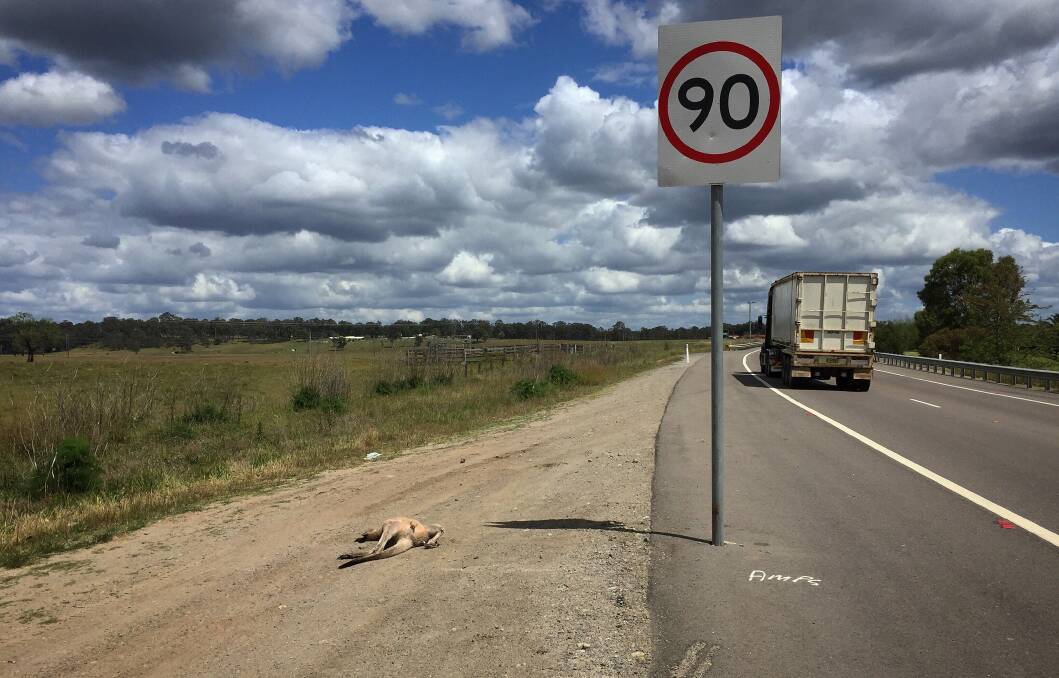Summer has finally arrived and thousands will be loading up the car over the Christmas holidays for a great Australian road trip.
But experts and advocates are urging road users to drive safely and be vigilant of the risks of colliding with native wildlife which can result in extensive damage to your vehicle and cause a serious or fatal accident.
New research from Insurance Australia estimates that 10 million animals die on Australian roads each year due to collisions with motor vehicles.
Government crash data shows that kangaroos and wallabies are most likely to be impacted in a casualty crash.
Major regional centres such as Dubbo, Canberra, Goulburn and Mudgee are most likely to have insurance claims for wildlife collisions.
University of Tasmania senior lecturer in wildlife ecology Scott Carver told ACM Australian wildlife was at higher risk of injury during the holiday season.
"They're susceptible to dashing out at the last minute in front of cars and being hit," he said.
"The main thing is wildlife are most likely to be hit by cars around dusk and dawn. So if you can avoid travelling on the roads around that time, and if you are going to be travelling, just going a bit slower, to maximise your chances of seeing wildlife if they are around and being able to slow down."

Over a six-week period in the December 2021-January 2022 school holidays, Wildlife Victoria responded to 1,131 reports of wildlife injured or killed by vehicles. Of those reports, more than 60 percent were Eastern Grey Kangaroos and Swamp Wallabies.
Kangaroos and wallabies are most active at dawn and dusk. The grass on the sides of our roads tends to be fresher from water run-off, making these areas more favourable feeding areas.
Beyond vehicle damage, National Roads and Motorists' Association Insurance data analysis suggests societal costs of road trauma as a result of animal collisions are approximately $7 billion per year.
National Roads and Motorists' Association Insurance spokesperson Peter Khoury said that driver behaviour was the single biggest contributor to motor vehicle accidents.
"More focus needs to be placed on driver education around how to minimise the risk of accidents involving wildlife, particularly when driving on regional and rural roads," he said.
On Christmas day last year a motorist outside of Bendigo called Wildlife Victoria to report a deceased kangaroo on the side of the road.
A trained wildlife emergency response operator instructed the motorist on how to safely perform a marsupial pouch check and, to his surprise, he found a small joey still alive inside in its mother's pouch.
The lucky joey was taken into care by a Wildlife Victoria carer, and was later released into the wild.
IN OTHER NEWS:
Dr Carver said that a pouch check on a recently hit female kangaroo may often yield a living joey.
"It's not uncommon that the mother may be killed but the joeys may actually survive, and if there's a joey in there that's alive they can be removed and taken to a veterinary clinic of wildlife rehabilitation centre," he said.
In Tasmania, high rates of animals killed by cars is earning the state a reputation as the 'roadkill capital of the world', according to RSPCA Tasmania.
From 2018 - 2021 the Save the Tasmanian Devil Program through the Roadkill TAS smartphone app reported 37,000 red-necked wallabies, 11,000 brushtail possums, and 4,700 Tasmanian pademelons were killed on the roads.
Infrastructure to prevent animal deaths on roads is being trialed overseas. In California animal crossings over major highways have been introduced to allow wildlife to travel safely through major traffic areas.


